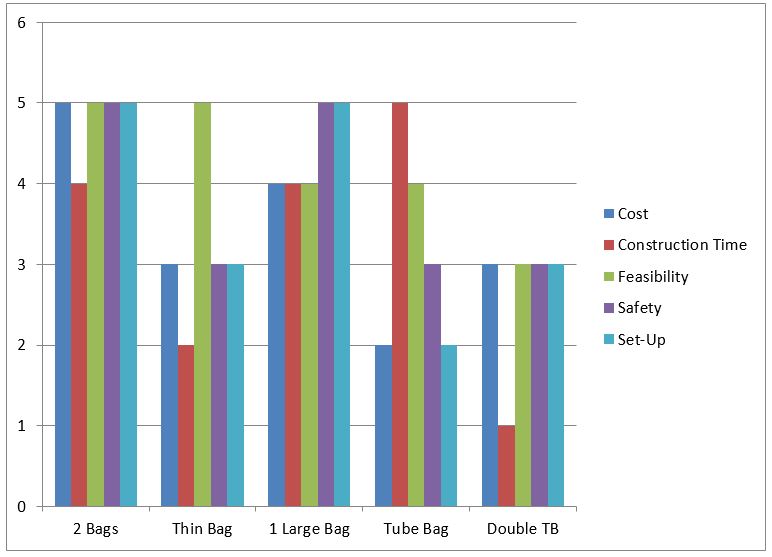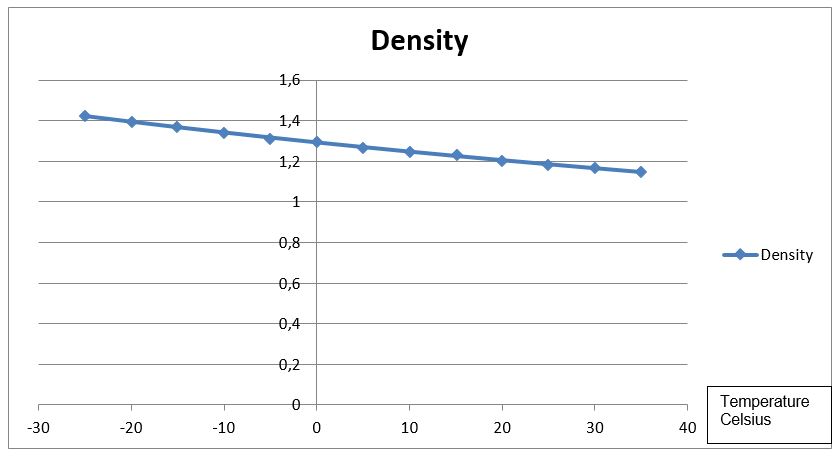 All papers examples
All papers examples
Disciplines

- MLA
- APA
- Master's
- Undergraduate
- High School
- PhD
- Harvard
- Biology
- Art
- Drama
- Movies
- Theatre
- Painting
- Music
- Architecture
- Dance
- Design
- History
- American History
- Asian History
- Literature
- Antique Literature
- American Literature
- Asian Literature
- Classic English Literature
- World Literature
- Creative Writing
- English
- Linguistics
- Law
- Criminal Justice
- Legal Issues
- Ethics
- Philosophy
- Religion
- Theology
- Anthropology
- Archaeology
- Economics
- Tourism
- Political Science
- World Affairs
- Psychology
- Sociology
- African-American Studies
- East European Studies
- Latin-American Studies
- Native-American Studies
- West European Studies
- Family and Consumer Science
- Social Issues
- Women and Gender Studies
- Social Work
- Natural Sciences
- Anatomy
- Zoology
- Ecology
- Chemistry
- Pharmacology
- Earth science
- Geography
- Geology
- Astronomy
- Physics
- Agriculture
- Agricultural Studies
- Computer Science
- Internet
- IT Management
- Web Design
- Mathematics
- Business
- Accounting
- Finance
- Investments
- Logistics
- Trade
- Management
- Marketing
- Engineering and Technology
- Engineering
- Technology
- Aeronautics
- Aviation
- Medicine and Health
- Alternative Medicine
- Healthcare
- Nursing
- Nutrition
- Communications and Media
- Advertising
- Communication Strategies
- Journalism
- Public Relations
- Education
- Educational Theories
- Pedagogy
- Teacher's Career
- Statistics
- Chicago/Turabian
- Nature
- Company Analysis
- Sport
- Paintings
- E-commerce
- Holocaust
- Education Theories
- Fashion
- Shakespeare
- Canadian Studies
- Science
- Food Safety
- Relation of Global Warming and Extreme Weather Condition
Paper Types

- Movie Review
- Essay
- Admission Essay
- Annotated Bibliography
- Application Essay
- Article Critique
- Article Review
- Article Writing
- Assessment
- Book Review
- Business Plan
- Business Proposal
- Capstone Project
- Case Study
- Coursework
- Cover Letter
- Creative Essay
- Dissertation
- Dissertation - Abstract
- Dissertation - Conclusion
- Dissertation - Discussion
- Dissertation - Hypothesis
- Dissertation - Introduction
- Dissertation - Literature
- Dissertation - Methodology
- Dissertation - Results
- GCSE Coursework
- Grant Proposal
- Admission Essay
- Annotated Bibliography
- Application Essay
- Article
- Article Critique
- Article Review
- Article Writing
- Assessment
- Book Review
- Business Plan
- Business Proposal
- Capstone Project
- Case Study
- Coursework
- Cover Letter
- Creative Essay
- Dissertation
- Dissertation - Abstract
- Dissertation - Conclusion
- Dissertation - Discussion
- Dissertation - Hypothesis
- Dissertation - Introduction
- Dissertation - Literature
- Dissertation - Methodology
- Dissertation - Results
- Essay
- GCSE Coursework
- Grant Proposal
- Interview
- Lab Report
- Literature Review
- Marketing Plan
- Math Problem
- Movie Analysis
- Movie Review
- Multiple Choice Quiz
- Online Quiz
- Outline
- Personal Statement
- Poem
- Power Point Presentation
- Power Point Presentation With Speaker Notes
- Questionnaire
- Quiz
- Reaction Paper
- Research Paper
- Research Proposal
- Resume
- Speech
- Statistics problem
- SWOT analysis
- Term Paper
- Thesis Paper
- Accounting
- Advertising
- Aeronautics
- African-American Studies
- Agricultural Studies
- Agriculture
- Alternative Medicine
- American History
- American Literature
- Anatomy
- Anthropology
- Antique Literature
- APA
- Archaeology
- Architecture
- Art
- Asian History
- Asian Literature
- Astronomy
- Aviation
- Biology
- Business
- Canadian Studies
- Chemistry
- Chicago/Turabian
- Classic English Literature
- Communication Strategies
- Communications and Media
- Company Analysis
- Computer Science
- Creative Writing
- Criminal Justice
- Dance
- Design
- Drama
- E-commerce
- Earth science
- East European Studies
- Ecology
- Economics
- Education
- Education Theories
- Educational Theories
- Engineering
- Engineering and Technology
- English
- Ethics
- Family and Consumer Science
- Fashion
- Finance
- Food Safety
- Geography
- Geology
- Harvard
- Healthcare
- High School
- History
- Holocaust
- Internet
- Investments
- IT Management
- Journalism
- Latin-American Studies
- Law
- Legal Issues
- Linguistics
- Literature
- Logistics
- Management
- Marketing
- Master's
- Mathematics
- Medicine and Health
- MLA
- Movies
- Music
- Native-American Studies
- Natural Sciences
- Nature
- Nursing
- Nutrition
- Painting
- Paintings
- Pedagogy
- Pharmacology
- PhD
- Philosophy
- Physics
- Political Science
- Psychology
- Public Relations
- Relation of Global Warming and Extreme Weather Condition
- Religion
- Science
- Shakespeare
- Social Issues
- Social Work
- Sociology
- Sport
- Statistics
- Teacher's Career
- Technology
- Theatre
- Theology
- Tourism
- Trade
- Undergraduate
- Web Design
- West European Studies
- Women and Gender Studies
- World Affairs
- World Literature
- Zoology
Hot Air Balloon Project Lifecycle, Essay Example
Hire a Writer for Custom Essay
Use 10% Off Discount: "custom10" in 1 Click 👇
You are free to use it as an inspiration or a source for your own work.

Abstract-Project Overview
The transportation of today requires movement by hot air balloon. Although other inventors, companies and theorists have tried to come up with the next hot air balloon that is effective, efficient and reliable it is up to us to break through the technological barriers through innovation and determination. Currently we are facing the all true reality regarding limited resources. Currently the project preliminary requirements and the scope is defined by the customer and with the aid of our engineers. Since the scope of the project is not fully defined we can use this to our advantage by utilizing the Agile project management methodology which leverages off our ability to adapt, innovate and make progress iteratively through the development, test, quality assurance and production environments. When talking to the client it was determined that only a proof of concept was needed initially regarding the project. Their preliminary requirements were as follows:
- Must rise to at least 5 feet from the releasing position (top to top or bottom to bottom distance)
- Must lift by itself and have a tether chain
- Must use ONLY the thermal energy of a hair drier; the hair drier needs to be removed when the hot air balloon is released.
- Must cost no more than $100 per group (you may buy one hair drier which is less than $25
- Must operate safely and include no hazardous materials; environmental benign materials are encouraged but not required
- Must perform some measurements and use Excel to either plot or analyze
- Must complete the set-up and demonstration within 2 minutes in the classroom demonstration/competition
Within all of these requirements each must be met to have a successful project closure. These requirements will be addressed later in the project documentation regarding Define, Generate, Decide, Implement forum.
Summation of Activities
When gathering a team for a new product introduction such as the hot air balloon they need to know why they are there and what needs to be accomplished. It is also important to have each member not only take part of the team but also feel like they are an integral cog in the wheel of success. This creates a sense of ownership and helps take any project to the next level. A sense of pride and accomplishment, while not specifically a value monetarily, is priceless when pushing through the trial and errors of new product development. The first step is to lay out the customer’s requirements and ensure everyone on the teams understand what they mean. There needs to be a path to success established so that we can get from design to implementation while all the while keeping the voice of the customer as a check and balance when making decisions.
After establishing a baseline for the team to start from we started to provide potential solutions for each requirement and the project as a whole. This was done to generate multiple ideas, some outlandish and some fairly practical. It also afforded the team the ability to think outside the box while reigning in slightly to defined requirements. In order to meet our deadline it was imperative to have a vector check periodically to maintain command and control of the design process. Once ideas flowed onto paper the five ideas were racked and stacked amount the team members according to cost, construction time, feasibility, safety and set-up. The areas were graded with 5 being the best in terms of minimal time or cost and maximal ability.

Once the project was selected the team was assigned a side task of documenting potential pitfalls and areas of improvement to facility change control and design implementation. The team had a list of the requirements posted at their workstations so that they knew that every decision or build still must fall within the requirement thresholds.
Define, Generate, Decide, and Implement
During the entire process the team followed the new product introduction method of Define, Generate, Decide, and Implement to facilitate the creative problem solving process.
As mentioned previously the process followed a typical project implementation lifecycle. The most difficult portion of the lifecycle is the define phase because this phase sets the course of action for the entire project. Define is defining the problem. If the problem is not correctly identified the project would solution a symptom of the issue instead of fixing the solution. We, as a team, kept the requirements fresh in our mind and consulted the client to ensure we were solving their need instead of bandaging their immediate symptoms. From this the team brainstormed and generated ideas in which they were measured and voted upon within the team. This type of decision analysis falls within the confines of Kepner Tregoe decision making (see above illustration regarding weights and voting). In order to get to the five potential project solutions there was a few brainstorming sessions. The first session revolved around open ended solutions to a hot air balloon with only the performance specifications included. This system help get the creative juices flowing by not hindering the team’s ability to think outside the box. Next the entire specification requirements were placed on the team to trim the extraneous and impractical solutions from the herd of ideas. Some of the ideas that made the second round cut included:
- Lawn trash bag weighted at the bottom for balance
- Skinny hollow plastic tubes made from cut trash bags heated and tied at both ends
- Small bag propelled by the force only of hair dryer
- Five bags tied together and heated simultaneously
- Medium trash bag weighted at the bottom for balance
From the solution acceptance it was time to formalize the build in development and test our unit.
Design of Project
The selected design was that of a typical 13 trash bag. The selection included the 13 gallon trash bag in which we attached weights attached by tape along the bottom side of the bag. The key to the project is the utilization of another 13 gallon trash bag placed directly over top that of the other. This is to provide insulation and heat loss reduction. If the time was extended for testing a “fill” between the two layers would have been used to inhibit further loss of heat resulting in a greater distance upward traveled. The trash bags selected utilized the “no tear” formula to inhibit accidental tears and projet degradation. This was selected because it is durable and could hold the greatest amount of hot air and could be filled in the allotted two minute set up time. If given a longer amount of time a larger trash bag would have been used so that the air could be fully heated to generate lift.
Product Design Elements

Living within the confines of the requirements pushed design of the overall project. The design is fairly simple. The double bagged balloon will have a clothed elastic band which is semi-tight around the output shaft of the hair dryer. The band is attached by tape as well as weights evenly distributed around the bottom edge of the bag (1 fishing lure weight every 4 inches around the opening of the bag). The bag will have the air heated for the full two minutes. Once the two minute time limit is over the tether is released simultaneously as the output shaft of the hair dryer is released. The elastic band will tighten to close off the opening so that air does not escape. This is only a redundancy in the system because if the weights work as designed the air would not be able to escape the bottom due to the physics of warmer air’s density in relation to the cooler air. The hot air rises creating balloon lift. The measurement will be from bottom to bottom.
Mechanics of Hot Air Balloons
Hot air balloons are probably not the most practical for of transportation due to the inability to steer and lack of speed control. The main focus of a hot air balloon revolves, or rises, around the fact that hot air rises above cold air. If enough hot air is connected to another mass the entire body will lift up off of the ground. Warmer air is lighter than cooler air. See graph for the relationship between air temperature and air density (Temperature is in Celsius and density is in kg-m^-3)

So with a graphic representation we can see that hotter air is lighter than cooler air. For our design and test we can infer by calculation that for every 100 degrees Fahrenheit the air is approximately 7 grams less per cubic foot. The hotter we can get the air in conjunction to the greater amount we can heat will result in a greater distance upwards. With our project we will have one shot at heating the air unlike conventional hot air balloons that can reheat their air by using natural resources such as the combustion of propane. The longer the air is heated the higher the balloon will rise. If the environment was isolated from all other laws and governance of physics theoretically the balloon would rise indefinitely. In reality the balloon would have an upper limitation due to the thinness of the air and its ability to remain buoyant. The larger the balloon’s size the higher the upper limit of that balloon. The fascinating part of a hot air balloon other that the grandeur of the physics behind lifting a mass with just heat is the how the pilot can steer the balloon. The wind moves in different directions at different altitudes so it is up to the pilot to understand the movement of the wind to determine the horizontal maneuvers by vertical alteration of the balloon. Steering the balloon takes the perfect balance and blend of art and science to romance the trajectory, direction, ascension and decent of the hot air balloon.
Summary
In order to make this project a success it took input from each team member throughout. Soft skills such as wordsmithing, oratory proclivity and the project pitch presentation abilities allowed adoption of all the stakeholders in the project thus allowing pitfalls and setbacks were avoided early and the efforts of the team could be focused on the issues at hand. There were also technical skills needed such as research and development, idea generation, testing and the ability to question theories. Both soft and hard skills combined allowed the team to mitigate issues and remain proactive throughout the project.
Those issues were providing a high quality product to the client while meeting all of the requirements set forth in the project requirement guidelines. Brainstorming was an interesting time because each team member comes from a different area of expertise, skill set and interests. The key to this development project was to put each individual into an area where they were comfortable in making educated decisions but also where they could be tested to their capacity in terms of ingenuity and progress.
The roles development through this project could be defined by the following:
Project Leader-Voice of the project, responsible for project scope management, cost management and schedule management
Developers-Idea generators, testers and implementers
Stakeholders-Team members and clients with a stake in the projects claim
While all the members of the team could be stakeholders and/or developers it was necessary to have one project leader to pull in all the loose ends and complete all the behind the scenes work to pull the project together. Project management was the focal point to the successful project and all members lead different phases of the project so that each could experience the success.

Stuck with your Essay?
Get in touch with one of our experts for instant help!

Time is precious
don’t waste it!
writing help!


Plagiarism-free
guarantee

Privacy
guarantee

Secure
checkout

Money back
guarantee

